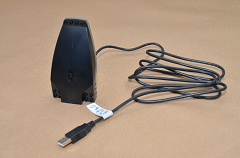The LEGO MindStorms RCX is capable of sending remote control IR signals to a LEGO Spybotics brick. This opens up a ton of new possibilities, essentially giving the RCX access to two more motors (theoretically even six as you can control up to three Spybotics over different channels).
The RCX has been set up real simply with three touch sensors, one for left, one forward and one right. The programming is made pretty easy using NQC:
task main()
{
/* Set all three Sensor types to Touch sensors */
SetSensorType(SENSOR_1, SENSOR_TYPE_TOUCH);
SetSensorType(SENSOR_2, SENSOR_TYPE_TOUCH);
SetSensorType(SENSOR_3, SENSOR_TYPE_TOUCH);
/* Set infrared power to High, so we can cover longer distance. */
SetTxPower(TX_POWER_HI);
while(true) // Loop forever
{
if (SensorValue(0)==1) //button 1 pressed
{
SendRCMessage(RC_CHANNEL_1, RC_CMD_REV, RC_CMD_FWD);
}
if (SensorValue(1)==1) //button2 pressed
{
SendRCMessage(RC_CHANNEL_1, RC_CMD_FWD, RC_CMD_FWD);
}
if (SensorValue(2)==1) //button3 pressed
{
SendRCMessage(RC_CHANNEL_1, RC_CMD_FWD, RC_CMD_REV);
}
Wait(5);
}
}
This of course assumes your Spybotics brick has been configured to RC channel 1. Download the program: rcx2spy_remote.nqc

